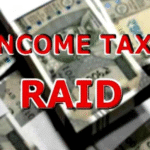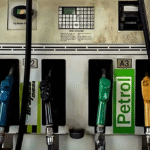The rollercoaster ride of crude oil prices continues in the global market. A 5% drop in crude prices after the Iran-Israel ceasefire has brought relief to India, but why are prices still stable at petrol pumps today? Let’s understand in detail…
⚡Storm in crude oil: 12-day war shook the markets
During the war: Crude oil reached $85/barrel
After peace: Prices fell to $69.50/barrel
Relief for India: Due to 85% dependence on oil imports, every $1 drop saves Rs 10,000 crore
(Source: Petroleum Ministry)
📉Why did petrol-diesel prices not fall?
Rupee weakness: Rupee at 83.50 against the dollar
Refining cost: Supply chain challenges in monsoon
Excise duty: Central government did not give any relief at the moment
Expert opinion: “If crude prices remain below $70 for 2 weeks, then a reduction of Rs 1-2 in petrol and diesel is possible by the end of June” Energy analyst, Praveen Kumar
💡Shocking fact:
Petrol in Telangana is Rs 107.07 / liter (most expensive in the country), while in Andaman it is only Rs 82.46!
🚀Future forecast
Monsoon effect: Delay in supply of oil tankers puts pressure on prices
US election factor: Donald Trump’s victory in November may lead to a surge in the oil market
OPEC+ meeting: Markets stir due to the decision to be taken on July 4
📌Golden tip for investors
✔️ Investment in oil market: Keep an eye on PSU stocks like ONGC, IOCL
✔️ Ways to save petrol: Right time to switch to CNG vehicles or electric vehicles
✔️ Travel planning: Wait for the price to fall or use public transport
🎯Final analysis:
“Oil prices are no longer just a supply-demand game, but have become a thermometer of geopolitics. As long as peace prevails in the Middle East, India will continue to get economic relief.”
(Data Source: Indian Oil Corporation, Petroleum Planning and Analysis Cell)
✍️ Author’s Note:
“If your budget is getting affected by petrol prices, this is the right time to consider e-bikes or carpooling. Save both nature and pocket!”








